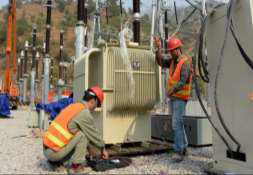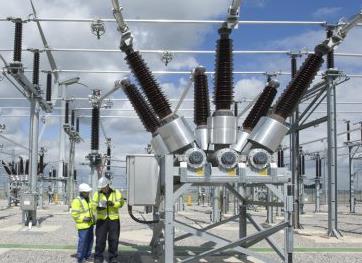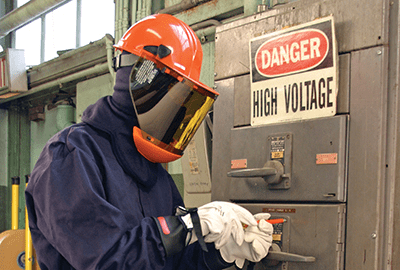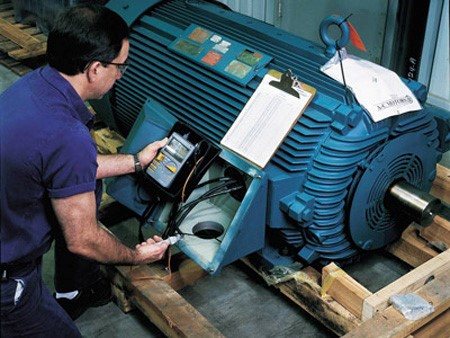COURSE OVERVIEW
EE0320 : Fault Analysis in Electrical Networks & Distribution Cables: Power Systems Troubleshooting

OVERVIEW
| COURSE TITLE | : | EE0320 : Fault Analysis in Electrical Networks & Distribution Cables: Power Systems Troubleshooting |
| COURSE DATE | : | Aug 04 - Aug 08 2025 |
| DURATION | : | 5 Days |
| INSTRUCTOR | : | Mr. Ahmed Hayajneh |
| VENUE | : | Abu Dhabi, UAE |
| COURSE FEE | : | $ 5500 |
| Request For Course Outline | ||
Course Description
This practical and highly-interactive course
includes various practical sessions and
exercises. Theory learnt will be applied using our
state-of-the-art simulators.
The detection of faults on electrical distribution systems
has been one of the most persistent and difficult
problems facing the electric utility industry. The
performance and characteristics of electrical system
configurations are vital factor in reducing or increasing
the effect of faults on the system as earthing system,
switch gear, protective relays, active and reactive
power generation, etc. Protective systems are designed
to sense faults and initiate fault clearing in a timely
manner while minimizing the affected area. Protective
relays are used to sense the faults and initiate circuit
breakers tripping. Alternatively, fuses are used on the
distribution system to sense and clear faults.
Electrical faults can cause severe damage when not
interrupted promptly. In some cases, high-impedance
fault currents may be insufficient to operate protective
relays or blow fuses. Standard overcurrent protection
schemes utilized on secondary distribution at some
industrial, commercial and large residential buildings
may not detect high-impedance faults, commonly called
arcing faults.
In these cases, more careful design techniques, such as the use of ground fault circuit
interruption, are required to detect arcing faults and prevent burndown. When a shortcircuit
fault occurs, the fault path explodes in an intense arc. Local customers endure an
interruption and customers farther away, a voltage sag; faults cause most reliability and
power quality problems. Faults kill and injure line operators. Crew operating practices,
equipment and training must account for where fault arc are likely to occur and must
minimize crew exposure. When faults occur, we have ways to reduce their impacts. This
course focuses on the general characteristics of faults and specific analysis of common
fault types with suggestions on how to reduce them.
This course is designed to present methods of Electrical Fault analysis, causes,
detection and remedies in Electrical Networks and Distribution Cables, particularly with
the aid of a personal computer and Power System Simulator. The approach is designed
to develop participant’s thinking process, enabling them to reach a sound understanding
of a broad range of topics related to electrical faults, while motivating their interest in the
electrical power industry. The course includes many case studies describing present
day, practical applications. Those case studies and exercises will be solved in the class.
link to course overview PDF
includes various practical sessions and
exercises. Theory learnt will be applied using our
state-of-the-art simulators.
The detection of faults on electrical distribution systems
has been one of the most persistent and difficult
problems facing the electric utility industry. The
performance and characteristics of electrical system
configurations are vital factor in reducing or increasing
the effect of faults on the system as earthing system,
switch gear, protective relays, active and reactive
power generation, etc. Protective systems are designed
to sense faults and initiate fault clearing in a timely
manner while minimizing the affected area. Protective
relays are used to sense the faults and initiate circuit
breakers tripping. Alternatively, fuses are used on the
distribution system to sense and clear faults.
Electrical faults can cause severe damage when not
interrupted promptly. In some cases, high-impedance
fault currents may be insufficient to operate protective
relays or blow fuses. Standard overcurrent protection
schemes utilized on secondary distribution at some
industrial, commercial and large residential buildings
may not detect high-impedance faults, commonly called
arcing faults.
In these cases, more careful design techniques, such as the use of ground fault circuit
interruption, are required to detect arcing faults and prevent burndown. When a shortcircuit
fault occurs, the fault path explodes in an intense arc. Local customers endure an
interruption and customers farther away, a voltage sag; faults cause most reliability and
power quality problems. Faults kill and injure line operators. Crew operating practices,
equipment and training must account for where fault arc are likely to occur and must
minimize crew exposure. When faults occur, we have ways to reduce their impacts. This
course focuses on the general characteristics of faults and specific analysis of common
fault types with suggestions on how to reduce them.
This course is designed to present methods of Electrical Fault analysis, causes,
detection and remedies in Electrical Networks and Distribution Cables, particularly with
the aid of a personal computer and Power System Simulator. The approach is designed
to develop participant’s thinking process, enabling them to reach a sound understanding
of a broad range of topics related to electrical faults, while motivating their interest in the
electrical power industry. The course includes many case studies describing present
day, practical applications. Those case studies and exercises will be solved in the class.
TRAINING METHODOLOGY
This interactive training course includes the following training methodologies:
LecturesPractical Workshops & Work Presentations
Hands-on Practical Exercises & Case Studies
Simulators (Hardware & Software) & Videos
In an unlikely event, the course instructor may modify the above training methodology for technical reasons.
VIRTUAL TRAINING (IF APPLICABLE)
If this course is delivered online as a Virtual Training, the following limitations will be applicable:
| Certificates | : | Only soft copy certificates will be issued |
| Training Materials | : | Only soft copy materials will be issued |
| Training Methodology | : | 80% theory, 20% practical |
| Training Program | : | 4 hours per day, from 09:30 to 13:30 |
RELATED COURSES

EE0050 : HV/MV Substation Design, Installation, Commissioning, Testing, Operation, Control & Maintenance
- Date: Dec 21 - Dec 25 / 3 Days
- Location: Istanbul, Turkey
- Course Details Register

EE0625 : Certified High Voltage Electrical Safety (IEC, OSHA, NFPA & EN Standards)
- Date: Dec 21 - Dec 25 / 3 Days
- Location: Istanbul, Turkey
- Course Details Register

EE0399 : Certified HV Electrical Safety Refresher Course
- Date: Dec 21 - Dec 25 / 3 Days
- Location: Doha, Qatar
- Course Details Register

EE0135 : Electric Motors & Variable Speed Drives: Selection, Applications, Operation, Diagnostic Testing, Protection, Control, Troubleshooting & Maintenance
- Date: Dec 22 - Dec 26 / 3 Days
- Location: Abu Dhabi, UAE
- Course Details Register
